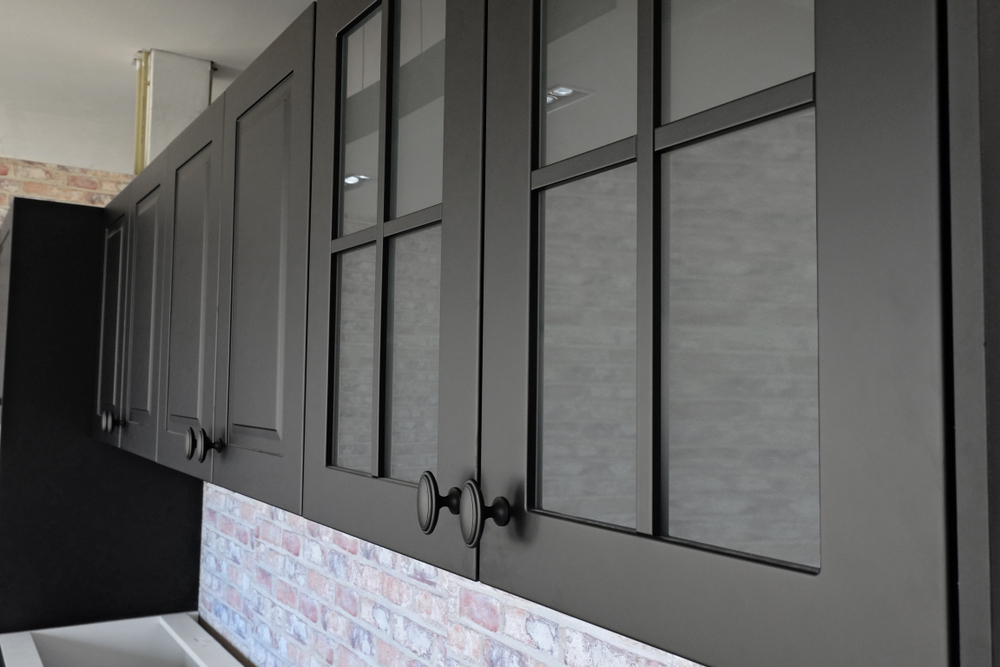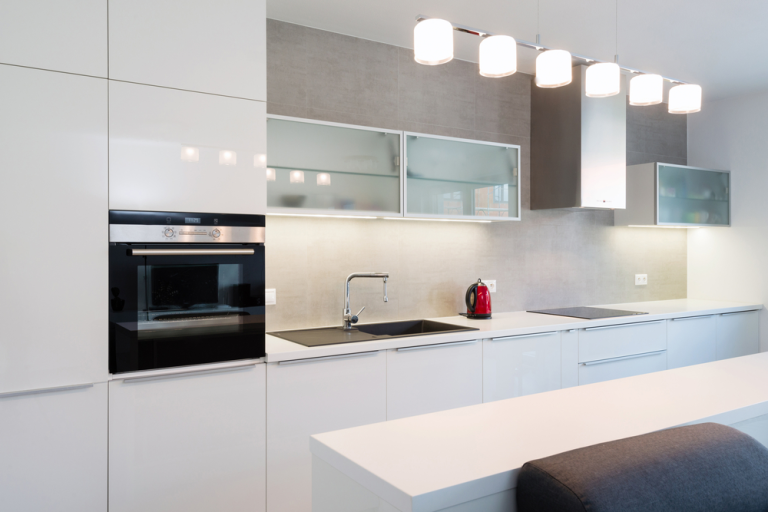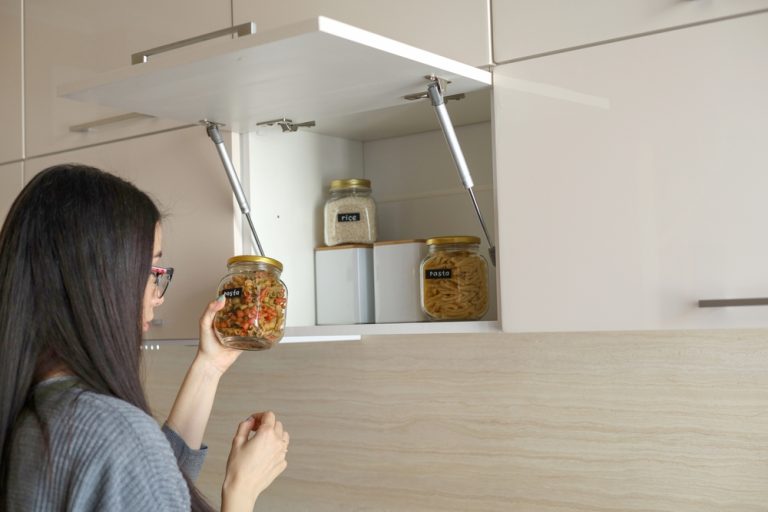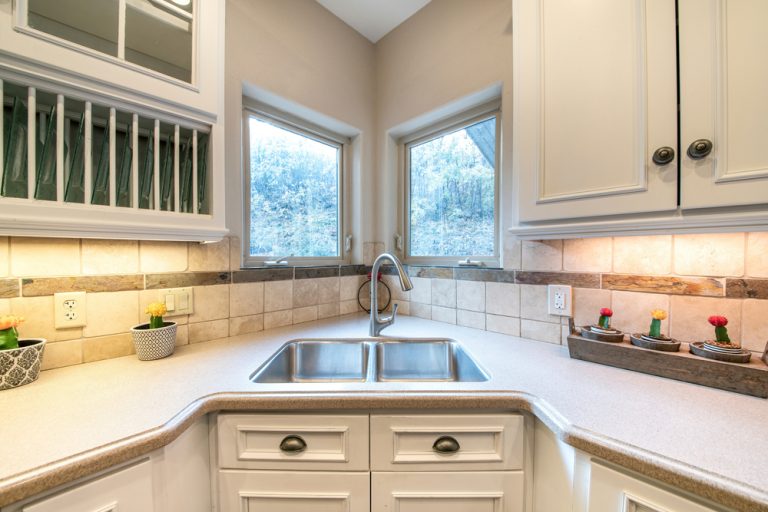Should Kitchen Cabinets Be Matte or Satin?

When selecting the perfect finish for your kitchen cabinets, one of the most common dilemmas is deciding between a matte or satin finish. Both finishes have their unique characteristics and benefits, and the choice you make can significantly impact the overall look and feel of your kitchen. So, should kitchen cabinets be matte or satin?
In this blog, we’ll explore the pros and cons of each finish, helping you make an informed decision that best suits your kitchen design and lifestyle.
Understanding Matte and Satin Finishes
Before diving into the advantages and disadvantages of each finish, it’s essential to understand what matte and satin finishes are and how they differ from one another.
Matte Finish
- Characteristics: A matte finish is known for its flat, non-reflective surface. It has little to no sheen, which gives it a smooth, velvety appearance. Matte finishes are often chosen for their understated, contemporary look and ability to hide imperfections.
- Texture: The texture of matte cabinets tends to be soft to the touch, creating a subtle, elegant effect. However, because matte finishes absorb light rather than reflect it, they can sometimes appear darker than their satin counterparts.
Satin Finish
- Characteristics: A satin finish strikes a balance between matte and gloss finishes. It has a soft, subtle sheen that reflects a small amount of light, giving the cabinets a slightly lustrous appearance. Satin finishes are popular for their versatility and timeless appeal.
- Texture: Satin finishes have a smooth texture that feels more polished than matte but less shiny than gloss. The slight sheen adds depth and dimension to the cabinets without overpowering the design.
Pros and Cons of Matte Kitchen Cabinets
Choosing a matte finish for your kitchen cabinets comes with several benefits, but it also has some drawbacks that you should consider before making your decision.
Pros of Matte Kitchen Cabinets
- Modern Aesthetic: Matte finishes are often associated with modern, minimalist designs. Their non-reflective surface creates a sleek and sophisticated look that’s perfect for contemporary kitchens.
- Hides Imperfections: One of the biggest advantages of matte cabinets is their ability to conceal imperfections. The flat finish doesn’t highlight scratches, fingerprints, or smudges as easily as glossier surfaces, making them a practical choice for busy kitchens.
- Soft and Subtle: The lack of sheen in matte finishes gives them a soft, understated appeal that works well with various color schemes and design styles. Whether you choose light or dark cabinets, the matte finish will create a calm, cohesive look.
Cons of Matte Kitchen Cabinets
- More Prone to Stains: While matte finishes are great at hiding smudges and fingerprints, they can be more prone to staining. Oil, grease, and other kitchen spills may be harder to clean from a matte surface, especially if not addressed immediately.
- May Appear Flat: Some homeowners find that matte finishes can appear too flat or dull, especially in kitchens with limited natural light. Without the reflective qualities of a satin or gloss finish, matte cabinets might not stand out as much.
- Requires More Maintenance: To keep matte cabinets looking their best, regular cleaning is essential. However, due to their susceptibility to staining, they may require more frequent and careful cleaning than satin finishes.
Pros and Cons of Satin Kitchen Cabinets
Satin kitchen cabinets offer a different set of advantages and disadvantages. Their slight sheen makes them a popular choice for a wide range of kitchen designs.
Pros of Satin Kitchen Cabinets
- Versatile Aesthetic: Satin finishes are highly versatile and work well in both traditional and modern kitchens. The subtle sheen adds a touch of elegance without being too flashy, making them a timeless choice.
- Easy to Clean: The smooth surface of satin cabinets makes them easier to clean than matte finishes. The slight sheen helps repel dirt, grease, and stains, so spills can be wiped away more easily.
- Reflects Light: Satin finishes reflect a small amount of light, which can help brighten up the kitchen. This is especially beneficial in smaller or darker kitchens, where the reflected light can make the space feel more open and airy.
- Durable: Satin finishes tend to be more durable than matte finishes. The protective layer of sheen helps guard against scratches, scuffs, and other signs of wear, making satin cabinets a practical choice for high-traffic kitchens.
Cons of Satin Kitchen Cabinets
- Shows Imperfections: Unlike matte finishes, satin cabinets are more likely to show imperfections like fingerprints, smudges, and scratches. While they are easier to clean, they may require more frequent touch-ups to maintain their appearance.
- Less Subtle: The slight sheen of satin finishes may not appeal to those looking for a more understated, minimalist look. The reflective surface can sometimes draw more attention to the cabinets, which may not be desirable in all design schemes.
- Can Reflect Too Much Light: In kitchens with abundant natural light or bright artificial lighting, satin cabinets might reflect more light than desired, creating glare or making the cabinets appear shinier than intended.
Choosing Between Matte and Satin Finishes
When deciding whether kitchen cabinets should be matte or satin, it’s important to consider your specific needs, design preferences, and lifestyle. Here are some factors to help guide your decision:
Design Style
- Modern and Minimalist: If you prefer a modern, minimalist look with clean lines and a subdued aesthetic, matte cabinets might be the better choice. Their flat finish complements contemporary designs and works well with bold, contrasting colors.
- Timeless and Versatile: For a more timeless and versatile look, satin cabinets are a great option. Their soft sheen adds a touch of elegance without overpowering the design, making them suitable for both traditional and modern kitchens.
Kitchen Size and Lighting
- Small or Dark Kitchens: If your kitchen is small or lacks natural light, satin cabinets can help brighten the space by reflecting light. The slight sheen creates a more open and airy atmosphere.
- Large or Well-Lit Kitchens: In larger kitchens with plenty of natural light, matte cabinets can create a cozy, intimate feel by absorbing light and reducing glare.
Maintenance and Durability
- Low Maintenance: If you’re looking for cabinets that are easy to maintain, satin finishes are generally easier to clean and more resistant to stains and scratches. They are a practical choice for busy households.
- Hiding Imperfections: If you have young children or a busy kitchen where cabinets are likely to get scratched or smudged, matte finishes are better at concealing these imperfections.
Personal Preference
Ultimately, the choice between matte and satin comes down to personal preference. Consider how each finish will look in your specific kitchen and how it aligns with your overall design vision.
Conclusion
So, should kitchen cabinets be matte or satin? The answer depends on your design preferences, lifestyle, and the specific needs of your kitchen. Matte cabinets offer a modern, understated look that hides imperfections and adds a soft, velvety texture to the space. On the other hand, satin cabinets provide a versatile, easy-to-clean finish with a slight sheen that brightens up the kitchen and adds a touch of elegance.
By carefully considering the pros and cons of each finish, as well as how they will fit into your kitchen’s design and daily use, you can make an informed decision that enhances both the functionality and aesthetics of your kitchen cabinets.






